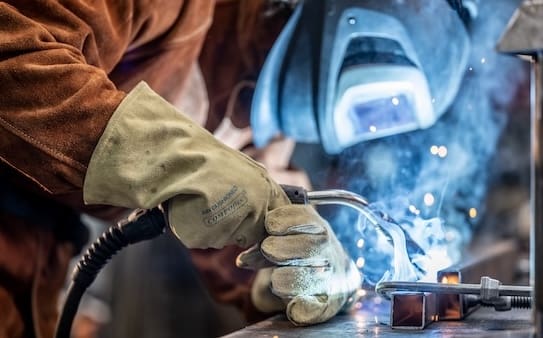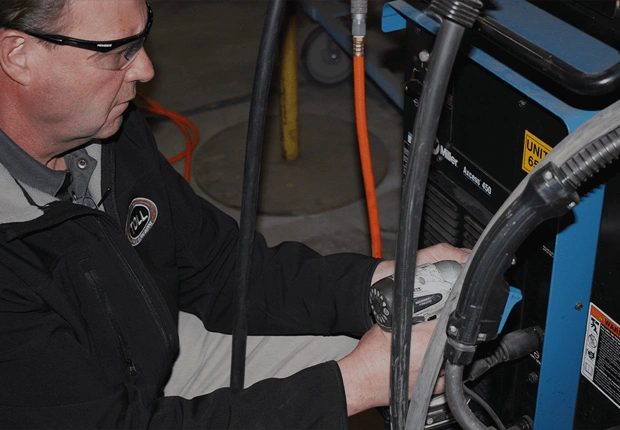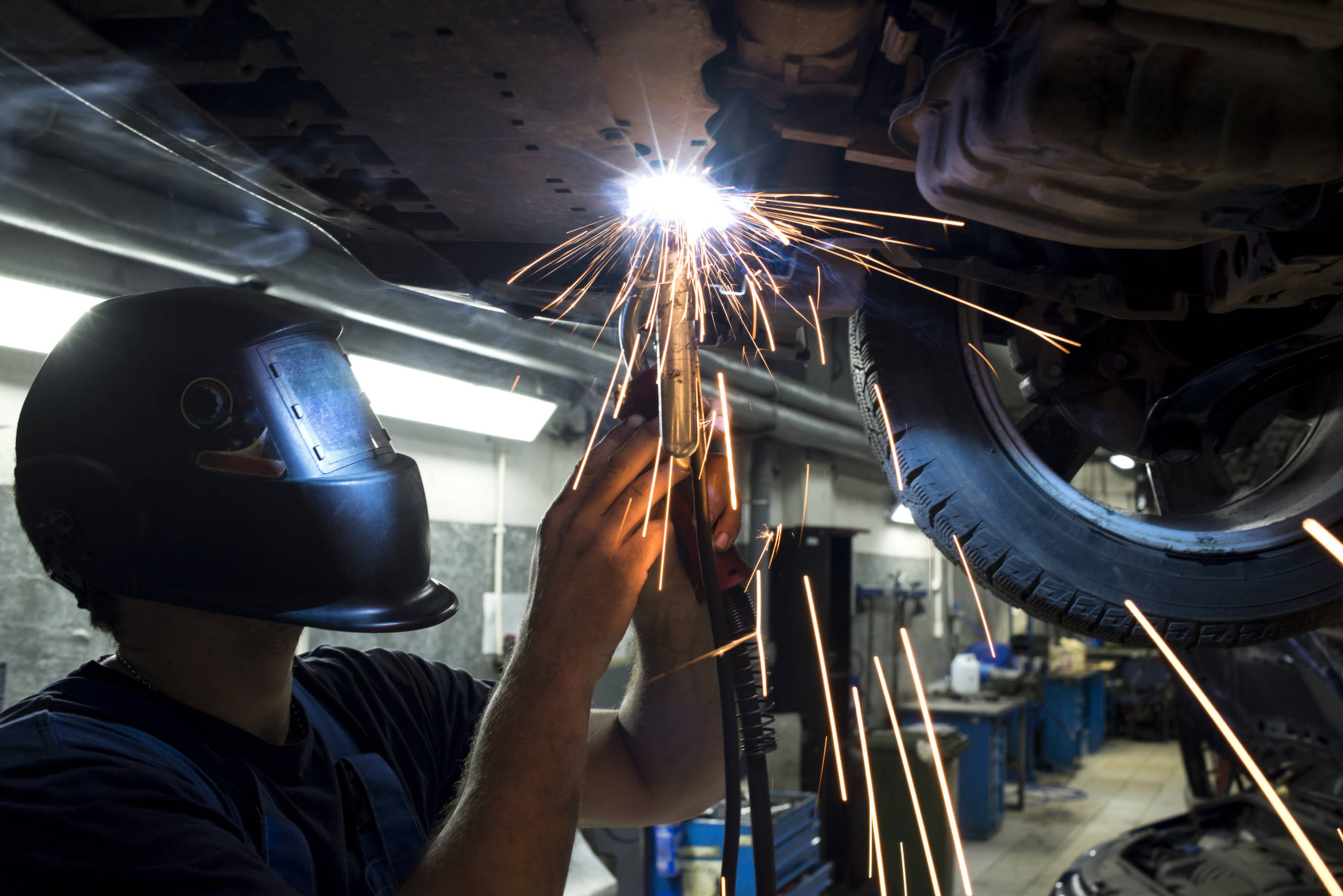Frequent causes of weld misalignment and Belgrade Fabrication’s tips
Usual Welding Repair Issues and Just How to Address Them Properly
Welding repair work usually come across a variety of issues that can endanger the integrity of the end product. Usual troubles include insufficient penetration, porosity, and imbalance, to name a few. Each problem offers special difficulties that call for particular methods for resolution. Understanding these problems is important for welders intending to boost their end results and skills. This conversation will discover these common welding repair concerns and effective techniques to resolve them.
Insufficient Penetration
Inadequate penetration occurs when the weld steel falls short to fully fuse with the base material, causing weak joints and prospective structural failings. This concern often stems from insufficient warm input, inaccurate electrode angle, or incorrect welding rate. Welders might come across insufficient penetration due to a miscalculation of the needed specifications for a certain material density or type. In addition, contamination on the base product's surface area can impede reliable bonding, worsening the problem. To resolve insufficient penetration, welders must assure suitable setups on their equipment and keep a tidy job surface area. Normal evaluation of welds is recommended to identify any type of deficiencies early, enabling timely modifications and the prevention of jeopardized structural stability in bonded assemblies.
Porosity
Porosity is a common defect in bonded joints that materializes as small gas bubbles entraped within the weld metal. This issue can endanger the stability of the weld, leading to reduced toughness and possible failing under anxiety. Montana Mobile Welding and Repair Welding. Porosity commonly develops from contamination, wetness, or improper welding methods, which enable gases to get away right into the molten weld pool. To resolve porosity, welders must ensure correct surface preparation, preserve a tidy workplace, and use ideal welding specifications. Additionally, picking the right filler material and shielding gas can mitigate gas entrapment. Normal examination and testing of welds can aid recognize porosity early, guaranteeing timely restorative activities are taken, therefore preserving the high quality and reliability of the welded framework
Misalignment
Misalignment in welding can arise from various factors, including incorrect setup and thermal expansion. Recognizing the origin is necessary for effective resolution. A number of modification strategies are available to straighten elements and assure structural honesty.
Root causes of Misalignment
Welding imbalance frequently originates from a range of underlying problems that can compromise architectural stability. One key cause is incorrect fit-up of components prior to welding, which can result in voids and unequal surface areas. Variations in thermal expansion throughout the welding process can additionally result in distortion, especially if the materials being joined have various coefficients of expansion. In addition, inadequate clamping and fixturing may stop working to hold elements safely in position, resulting in activity during welding. Inadequately conserved devices, including welding equipments and devices, might introduce variances in the weld grain, further contributing to misalignment. Driver mistake, stemming from not enough training or experience, can likewise play a substantial duty in producing misaligned welds.

Improvement Methods Available
Addressing misalignment efficiently requires a combination of restorative strategies tailored to the details concerns at hand. One common method is using fixtures or jigs to hold parts in the appropriate placement during welding, making certain consistent positioning. Additionally, pre-heating the materials can aid decrease distortion and boost fit-up. For considerable misalignment, mechanical adjustment methods, such as using hydraulic jacks or clamps, can be used to correct the position before welding. Post-weld heat treatment might likewise be essential to relieve stress and anxieties brought on by imbalance. Cautious evaluation and change during the arrangement phase can stop imbalance issues from ending up being considerable issues, advertising a smoother welding process and improving overall architectural stability.
Distortion
Distortion is a typical difficulty in welding that can emerge from numerous variables, consisting of uneven heating & cooling. Recognizing the causes of distortion is essential for carrying out effective avoidance strategies. Addressing this problem not just boosts structural stability however also boosts the overall high quality of the weld.
Reasons for Distortion
When based on the extreme heat of welding, products often undergo modifications that can result in distortion. This sensation largely emerges from thermal development and tightening throughout the welding process. As the weld area warms up, the material broadens; upon air conditioning, it gets, which can develop interior stresses. On top of that, unequal heating throughout a work surface can worsen these anxieties, leading to warping or flexing. The kind of material also plays a considerable role; metals with varying thermal conductivity and coefficients of growth may respond in a different way, bring about unpredictable distortions. Poor joint layout and poor fixturing can add to imbalance during welding, increasing the possibility of distortion. Comprehending these reasons is essential for effective welding fixing and avoidance techniques.
Avoidance Techniques
Effective avoidance methods for distortion during welding concentrate on regulating warm input and making certain appropriate joint layout. Maintaining a consistent warm input aids to minimize thermal development and tightening, which can bring about distortion. Using methods such as pre-heating the work surface can likewise decrease the temperature level slope, promoting consistent home heating. Furthermore, picking appropriate joint styles, such as T-joints or lap joints, can boost stability and decrease tension concentrations. Executing correct fixturing to secure the workpieces in place better aids in maintaining positioning during the welding procedure. Staggered welding sequences can disperse warmth a lot more evenly, stopping localized distortion. By using these methods, welders can considerably reduce the possibility of distortion and enhance the total top quality of their welds.
Cracking
Fracturing is an usual issue come across in welding repairs, often arising from numerous elements such as improper cooling prices, material selection, or insufficient joint prep work. The event of fractures can substantially endanger the stability of the weld, bring about prospective failings throughout operation. To address this issue, welders must initially assess the origin, making sure that materials work and properly chosen for the details application. Additionally, regulating the air conditioning price throughout the welding procedure is essential; quick air conditioning can generate tension and cause breaking. Appropriate joint layout and preparation also add to reducing the threat. Carrying out these approaches can enhance weld high quality and toughness, ultimately lowering the chance of fracturing in completed weldments.

Insufficient Combination
A significant concern in welding repair work is insufficient fusion, which happens when the weld metal does not properly bond with the base material or previous weld passes - Montana Mobile Welding and Repair Fabrication. This issue can bring about weak points in the joint, potentially Bonuses compromising the honesty of the welded structure. Variables adding to incomplete fusion include insufficient heat input, inappropriate welding method, and contamination of the surfaces being joined. To address this issue effectively, welders must guarantee correct pre-weld cleansing and surface area prep work, along with change their welding parameters to achieve sufficient penetration and blend. Routine assessment throughout the welding procedure can likewise assist determine insufficient fusion early, permitting timely rehabilitative procedures to improve the total high quality of the weld
Overheating
While welding repairs can improve structural honesty, overheating provides a significant obstacle that can result in product deterioration. Extreme warmth during welding can modify the mechanical properties of steels, resulting in decreased strength, increased brittleness, and bending. This phenomenon is specifically essential in high-stress applications where architectural dependability is extremely important. Recognizing getting too hot can involve aesthetic examinations for discoloration or distortion, as well as keeping an eye on temperature level during the welding process. To minimize the dangers related to getting too hot, welders must use appropriate strategies, such as managing warm input, readjusting traveling speed, and using ideal filler materials. Furthermore, implementing pre- and post-weld warm therapies can aid recover material residential properties and improve the overall high quality of the repair work, making certain long-lasting performance and safety.
Regularly Asked Inquiries
What Are the Common Indications of a Welding Defect?

How Can I Check My Welds for Top quality?
To examine welds for high quality, one can make use of visual inspections, ultrasonic testing, and radiographic methods. Each technique assures structural honesty, identifies problems, and confirms adherence to specified standards, eventually boosting the integrity of the bonded joints.
What Safety Safety Measures Should I Take While Welding?
When welding, one need to focus on safety and security by putting on appropriate personal protective tools, ensuring correct air flow, safeguarding flammable materials away, preserving a tidy workspace, and recognizing surroundings to stop mishaps and injuries.
Can I Fix a Weld Without Redoing the Entire Joint?
Fixing a weld without redoing true arc welding lens the entire joint is feasible, relying on the damages (Montana Mobile Welding and Repair Belgrade Welding). Techniques such as grinding, including filler product, or making use of a welding procedure can effectively resolve particular problems while maintaining the surrounding framework
What Devices Are Vital for Efficient Welding Fixes?
Essential tools for efficient welding fixings consist of a welding machine, cable brush, grinder, protective gear, clamps, and filler materials. Each device plays an important duty in guaranteeing top quality and safety during the repair service procedure. Porosity commonly emerges from contamination, wetness, or incorrect welding strategies, which permit gases to get away right into the liquified weld pool. Inadequately conserved devices, including welding makers and devices, might present disparities in the weld grain, further adding to imbalance. When subjected to the intense heat of welding, products commonly undergo adjustments that can lead to distortion. Breaking is an usual problem come across in anonymous welding repairs, frequently resulting from numerous factors such as inappropriate cooling rates, product choice, or insufficient joint preparation. A considerable problem in welding repair services is incomplete combination, which takes place when the weld metal does not sufficiently bond with the base product or previous weld passes.